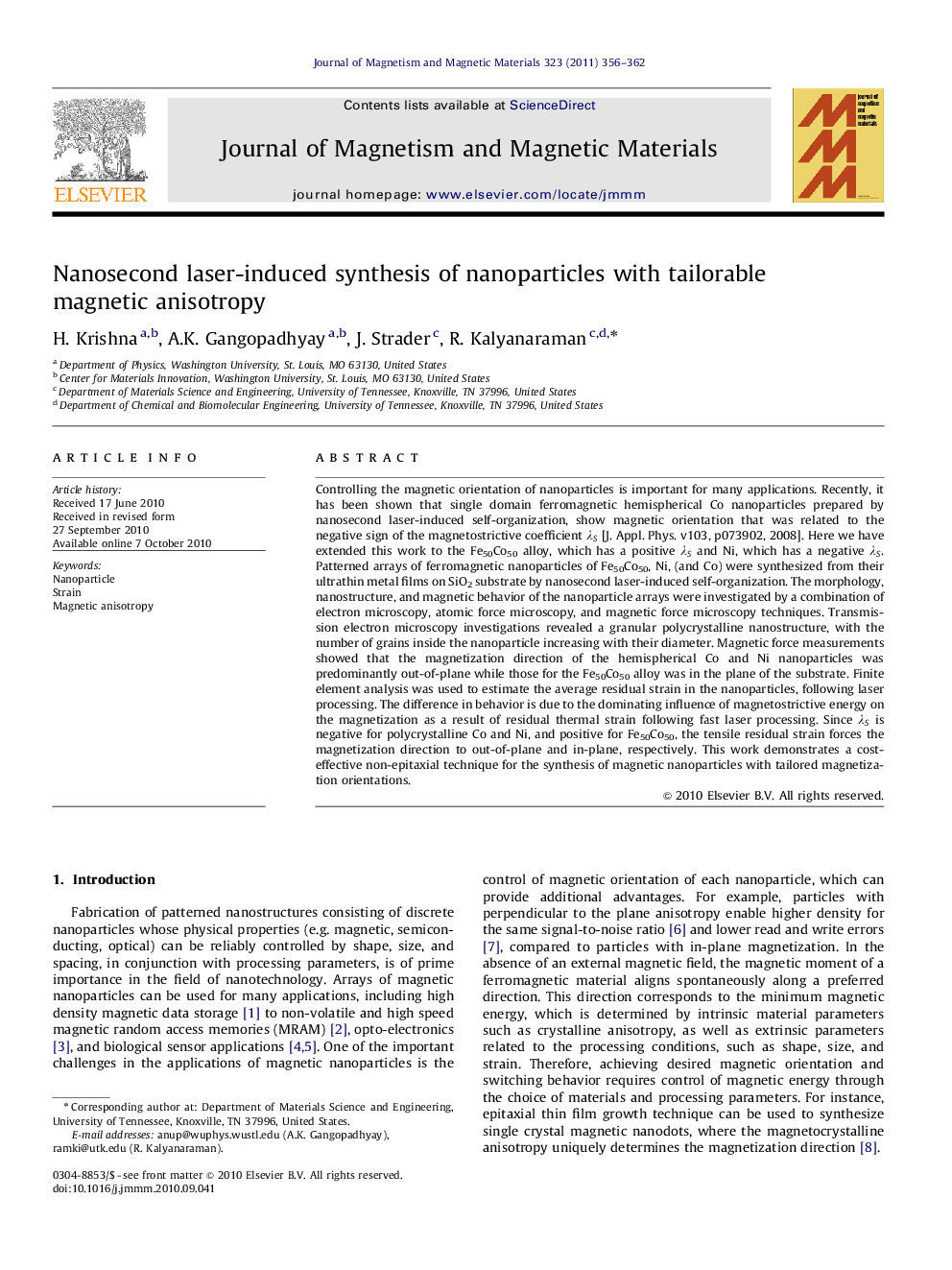| Article ID | Journal | Published Year | Pages | File Type |
|---|---|---|---|---|
| 1801187 | Journal of Magnetism and Magnetic Materials | 2011 | 7 Pages |
Controlling the magnetic orientation of nanoparticles is important for many applications. Recently, it has been shown that single domain ferromagnetic hemispherical Co nanoparticles prepared by nanosecond laser-induced self-organization, show magnetic orientation that was related to the negative sign of the magnetostrictive coefficient λSλS [J. Appl. Phys. v103, p073902, 2008]. Here we have extended this work to the Fe50Co50 alloy, which has a positive λSλS and Ni, which has a negative λSλS. Patterned arrays of ferromagnetic nanoparticles of Fe50Co50, Ni, (and Co) were synthesized from their ultrathin metal films on SiO2 substrate by nanosecond laser-induced self-organization. The morphology, nanostructure, and magnetic behavior of the nanoparticle arrays were investigated by a combination of electron microscopy, atomic force microscopy, and magnetic force microscopy techniques. Transmission electron microscopy investigations revealed a granular polycrystalline nanostructure, with the number of grains inside the nanoparticle increasing with their diameter. Magnetic force measurements showed that the magnetization direction of the hemispherical Co and Ni nanoparticles was predominantly out-of-plane while those for the Fe50Co50 alloy was in the plane of the substrate. Finite element analysis was used to estimate the average residual strain in the nanoparticles, following laser processing. The difference in behavior is due to the dominating influence of magnetostrictive energy on the magnetization as a result of residual thermal strain following fast laser processing. Since λSλS is negative for polycrystalline Co and Ni, and positive for Fe50Co50, the tensile residual strain forces the magnetization direction to out-of-plane and in-plane, respectively. This work demonstrates a cost-effective non-epitaxial technique for the synthesis of magnetic nanoparticles with tailored magnetization orientations.
Research Highlights► Pulsed laser self-organization of ferromagnetic films produces an array of single-domain magnets with tailorable magnetic orientation. ► Direction of magnetic orientation of as-prepared array is shown to be in-plane or out-of-plane ► Sign and magnitude of magnetostrictive coefficient determines the direction of magnetic orientation.
